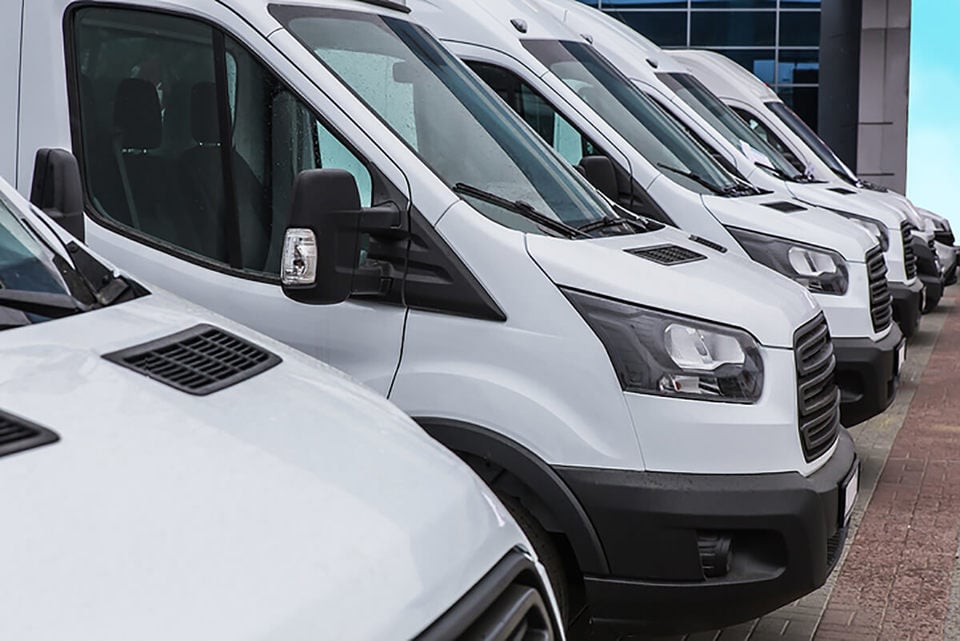LCV operators risk a “legislation minefield” when ordering Euro 6-compliant vehicles that could be transformed into ‘heavy duty’ vehicles following conversion.
Vans with a gross vehicle weight up to 3,500kg fall into vehicle category N1, which is subsequently split into three classes: class I, up to a maximum of 1,305kg; class II, 1,305-1,760kg; and class III, more than 1,760kg.
Euro 6 emission rules impacting on 1,305-3,500kgs vans and 3.5-12-tonne commercial vehicles come into effect from September 1, 2016 – those for vans up to 1,305kg were implemented on September 1, 2015.
When vehicle emissions are measured they must comply with either Euro 6 ‘light duty’ or Euro VI ‘heavy duty’ regulations. The difference between the ‘6’ and ‘VI’ is intended to help identify whether powertrains are categorised as light or heavy duty.
The CO2 content of light duty models is expressed as g/km as the whole vehicle is tested. However, the CO2 content of heavy duty vehicles is expressed as g/kWh, as only the engine is tested.
The key determinant as to whether a vehicle should be designated light duty or heavy duty is the ‘mass in running order’ (MIRO), although some manufacturers may refer to the ‘reference mass’.
MIRO is the mass of vehicle plus fuel tank(s) filled to at least 90%, plus mass of driver (75kg), plus mass of vehicle liquids, plus standard equipment in accordance with the manufacturer’s specifications, plus mass of bodywork plus coupling and the spare wheel(s) plus tools.
The ‘reference mass’ is the mass of the vehicle in running order less the uniform mass of the driver (75kg), but increased by a uniform mass of 100kg.
Renault Trucks has calculated the MIRO of its vehicle range in line with the three N1 class weight splits: class I weight, the cut off for the highest MIRO weight is 2,355kg meaning a ‘light duty’ engine specification only; class III weight, when the MIRO exceeds 2,815kg vans can only be ordered with a ‘heavy duty’ engine; class II weight, vans with an MIRO between 2,355kg and 2,815kg can be ordered and registered with light duty or heavy duty engines.
Fleet operators will be familiar with a van’s kerb weight, so to discover a vehicle’s MIRO and know the N1 class weight and be aware there may be a choice between a light duty or heavy duty engine, it is necessary to add the weight of the bodywork to the kerb weight.
For example, on a standard Renault Master Euro 6, chassis cab kerb weight is around 1,854kg and on a long wheelbase medium roof panel van it is 2,183kg.
“It is a potential minefield for fleet operators,” said Richard Chamberlain, LCV manager at Renault Trucks. “It is critical that operators are very clear with vehicle manufacturers, dealers and aftermarket specialists on the application of vehicles and how they are going to be used on a day-to-day basis.
Fleet operators are unlikely to know which category vehicles will be in and should seek clarification prior to ordering, especially when having conversion work done and adding significant weight to ensure the vehicle meets the latest Euro 6 regulations.”
The new regulations will typically impact on manufacturers’ large vans as they bridge the weight thresholds – as opposed to car-derived and small and medium-sized models.
Chamberlain said: “If operating panel vans as parcel delivery vehicles without any conversion then the regulations will have little impact as they will fall into the N1 Class II category.
“However, if adding equipment as part of the new vehicle conversion process to vans such as generators, compressors, transforming the vehicle into a cherry picker or converting a panel van into a welfare vehicle or wheelchair access minibus, it should be ordered as a heavy duty vehicle.”
Vehicles cannot be homologated retrospectively from light duty to heavy duty emissions, so it is critical that the right vehicle with the right engine is ordered with the factory, explained Chamberlain.
Vans compliant with Euro 6 light duty standards are equipped with in-cab warnings to remind drivers to top up the AdBlue tank.
However, on Euro VI heavy duty vans, during the final stage of the warnings there is an engine torque reduction.
Once the AdBlue is empty, the vehicle’s speed is limited to 12mph allowing a driver to reach a garage for a tank top-up so they are not stranded.

















Login to comment
Comments
No comments have been made yet.